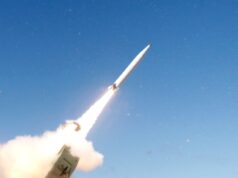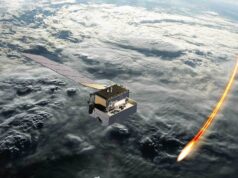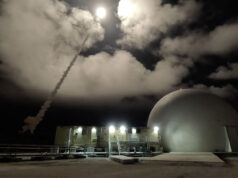Lockheed Martin have successfully conducted the first-ever launch of the Long Range Anti-Ship Missile (LRASM) surface-launch variant from a topside canister.
According to the company, the flight test at White Sands Missile Range proved the missile’s ability to conduct an angled launch from the newly designed topside canister, replicating a ship-launched environment.
During the test, the LRASM, its Mk-114 booster and booster adapter ejected cleanly from the topside launcher using the same launch control and launch sequencer software currently employed by the Mk-41 Vertical Launch System.
Scott Callaway, Subsonic Cruise Missile director at Lockheed Martin Missiles and Fire Control said:
“This successful flight test demonstrates Lockheed Martin’s readiness to answer the U.S. Navy’s call for lethal, longer range anti-surface warfare capabilities as part of the ‘Distributed Lethality’ concept.
This test also validates the flexibility and versatility of LRASM, as it proved it can be successfully fired from VLS and non-VLS surface platforms.”
Lockheed said in a statement:
“Integrating LRASM onto surface ships enables distributed operations beyond enemy threat ranges. Along with the already proven VLS launch capability of LRASM, this topside canister with an angled launcher allows the LRASM surface-launch variant to be employed aboard various platforms in the Navy’s surface fleet, providing the potential for a powerful new anti-ship role under the U.S. Navy’s “Distributed Lethality” concept of operations.
The LRASM surface-launch variant is built on the same production line as JASSM, JASSM-ER and LRASM air-launch weapons, delivering the same long-range, precision capability while benefiting from manufacturing efficiencies.”
LRASM is an anti-ship missile designed to meet the needs of US Navy and Air Force in a ‘robust contested environment’.
The air-launched variant provides an early operational capability for the US Navy’s offensive anti-surface warfare Increment I requirement to be integrated onto the US Air Force’s B-1B in 2018 and on the U.S. Navy’s F/A-18E/F Super Hornet in 2019.









Good, now whack it on a T45 pronto
Does anyone know if there are plans for an interim ASM solution? I say ‘interim’ but it is likely to be 15 years or so until Perseus is ready. Surely they must be looking at something and not contemplating such a long ‘capability gap’?
The MOD is pretty incompetent, but not that much so. There will unquestionable be a interim ASM solution been announced this year or next for the current fleet.
Lets hope so, can’t say I would want to be on the QE sailing in the South China Sea with no ASM on the fleet.
I also hope they equip the RAF with an ASM but I suspect that will have to wait for Perseus, if at all.
Well let’s see some of Fallon’s much vaunted ‘178Bn equipment plan’ spent on getting LSRAM on the 45’s and 23’s ASAP!!!
Agree – lets order it and get it stuck on some of our ships
If only we ran the show,what a fleet we would have.